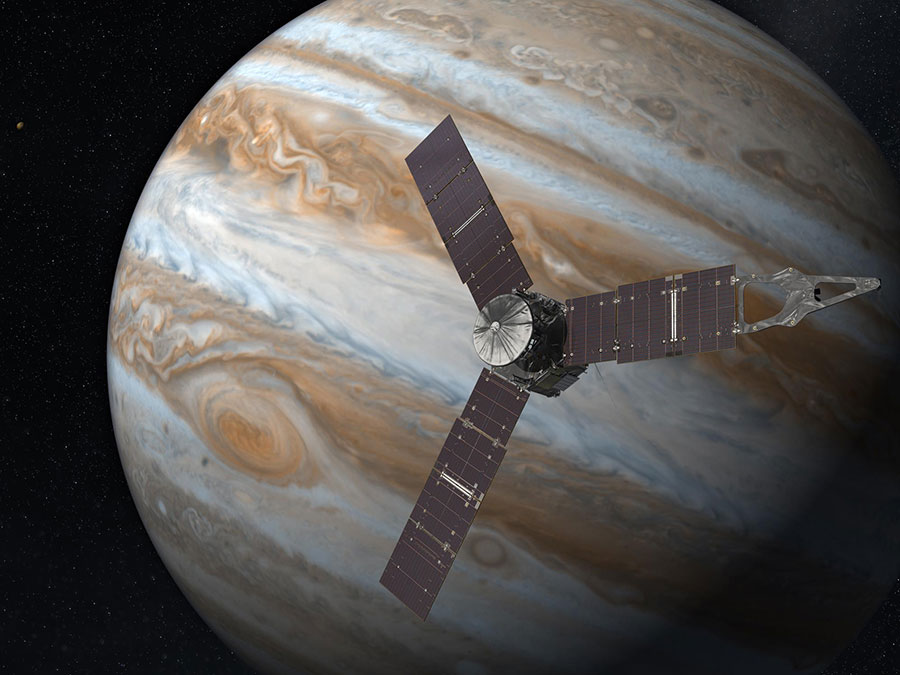Juno, the NASA spacecraft studying Jupiter, has suspended the last burn of its main engine because of a problem with the pressurization system valves. The burn of engines is called the period reduction maneuver (PRM) and allows Juno to reduced its orbital period around Jupiter from 53.4 to 14 days. The PRM was rescheduled for December 11.
The decision to postpone Juno’s burn of the main engine was made due to some valves that are part of the pressurization system of the spacecraft. Scientists thought it was best to postpone the PRM and check what is wrong with those valves. According to Rick Nybakken, Juno project manager at NASA’s Jet Propulsion Laboratory in Pasadena, California, the valves did not perform as expected during a command sequence. It took them minutes to open when the standard time should be seconds.

“Telemetry indicates that two helium check valves that play an important role in the firing of the spacecraft’s main engine did not operate as expected during a command sequence that was initiated yesterday,” said Nybakken. He added that Juno’s team need to better understand the issue before carrying the PRM.
Nybakken and his colleagues consulted with Lockheed Martin Space System of Denver and NASA Headquarters, Washington before postponing the burnout. The next date was calculated considering efficiency, and Juno’s next orbit will be the proper time to performed the PRM. The spacecraft next orbit is its last flyby of Jupiter and will happen on December 11.
If Juno had not had any technical problem, the PRM would have used a limited set of its instrument: only nine. But now that the burn out was reschedule, the spacecraft will be able to use all of its gadgets to gather data in the next and last flyby.
If Juno’s valve problems are not solved by December, NASA can still study Jupiter
Juno’s mission is “very flexible,” said Scott Bolton, principal investigator of Juno from the Southwest Research Institute in San Antonio. Bolton stated that people should keep in mind that the orbital period does not affect the quality of the data collected by Juno.
Mr. Bolton said that Juno’s first flyby, which was on August 27th, was a revelation for NASA, and he thought that a similar experienced would be happening tomorrow on Juno’s October 19th PRM.
Even if Juno does not get to perform another 14-day orbit, the spacecraft will have the chance to keep studying Jupiter until it has to return to Earth in February 2018.
Juno and the information it is collecting about Jupiter will help humanity to better understand the solar system. The spacecraft mission is trying to determine how much water is in the planet’s atmosphere and how it is composed: which elements has, its temperature, clouds motion, and other properties.
Among Juno’s tasks, it is also to map Jupiter’s magnetic and gravity fields and to explore and study the giant planet’s magnetosphere near the planet’s poles, where it has its auroras.
Getting to know Jupiter will help scientists to understand how the planet was formed and how the universe has worked over the years. The Juno mission cost NASA about $1.1 billion and launched in August 2011. It finally get to Jupiter in August 2016.
One way or another, I’m gonna see ya. Powering up my science eyes + ears for next orbit https://t.co/iq4tEPosNZ pic.twitter.com/1jjb5YS6Yn
— NASA's Juno Mission (@NASAJuno) July 8, 2016
Source: NASA
